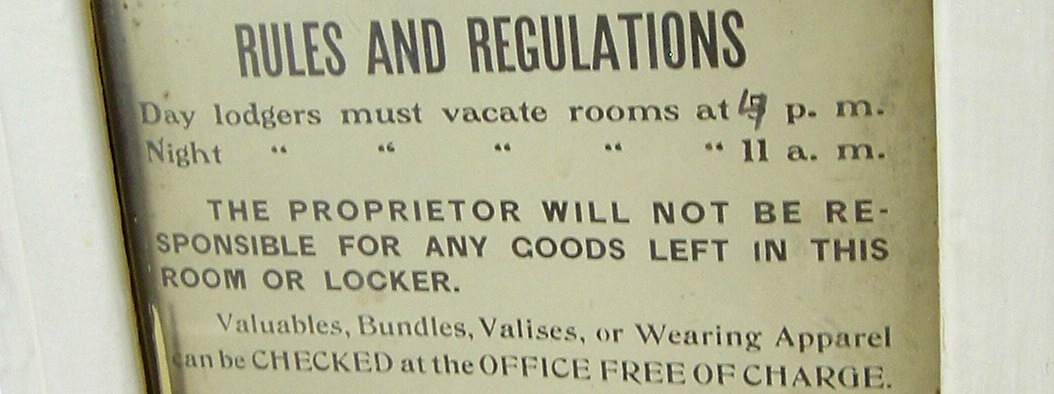
Other New York SROs
Other Former SROs on the Bowery
The Alabama Hotel was at 219 Bowery, across from the Prince Hotel. It's the red building at left here, it's entrance door is the right-most one in that structure.
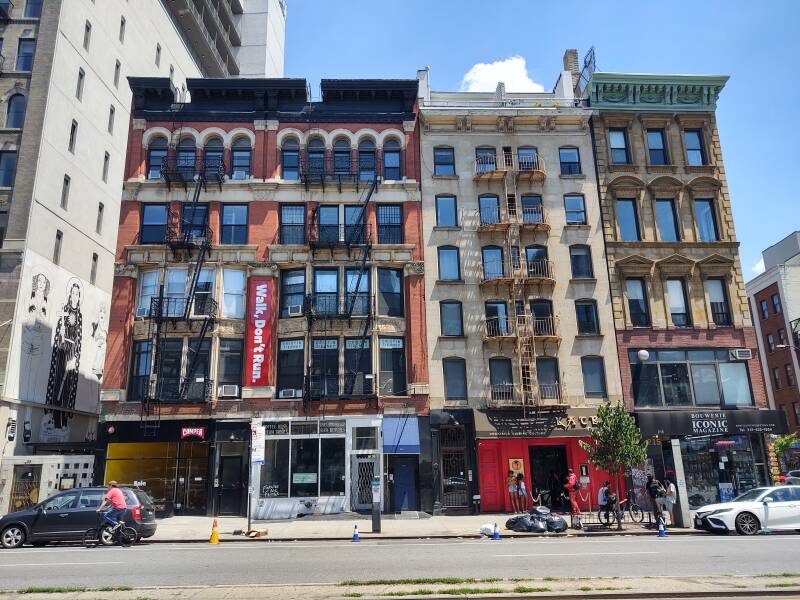
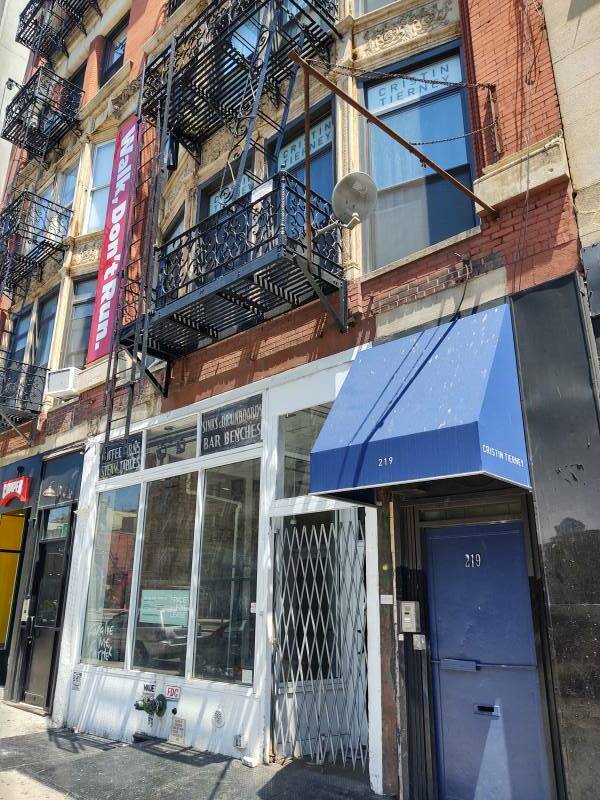
It's in a district that has sold restaurant equipment for many years.
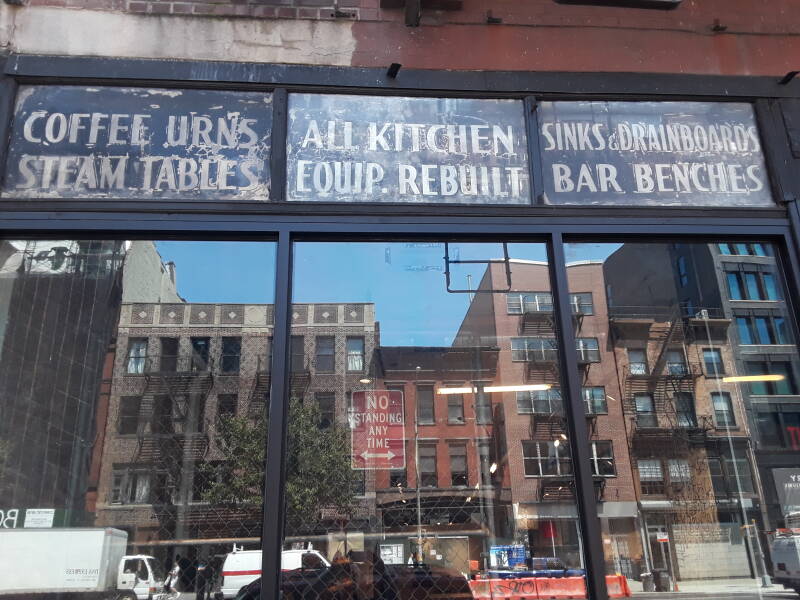
A sign remains on the tile wall just inside the door.
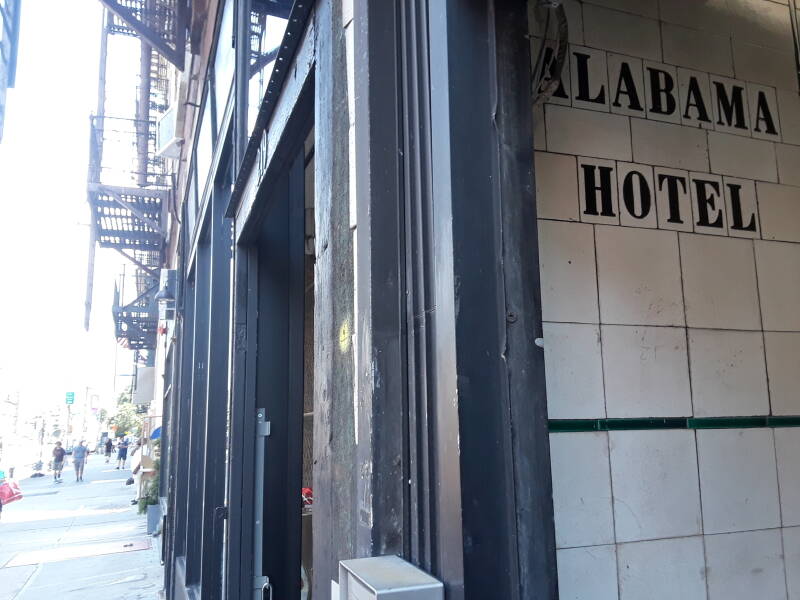
Now there's an art gallery filling one of the upper floors. They had a special exhibit on and I went to it, incidentally discovering another former SRO in the process. I told the gallery owner that I was staying across the Bowery in the former Prince Hotel, now more of a hostel, and he told me a little about the Alabama Hotel's history.
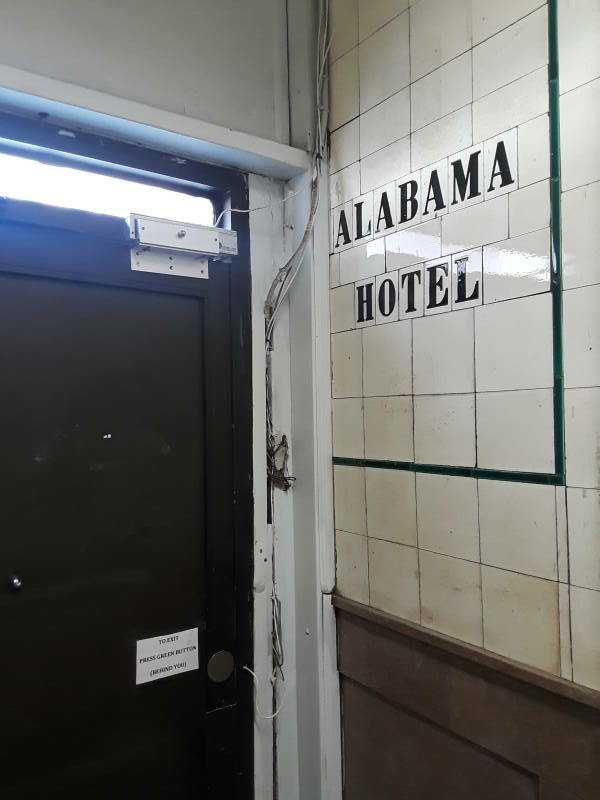
The former Uncle Sam House at 280 Bowery has been converted to apartments.
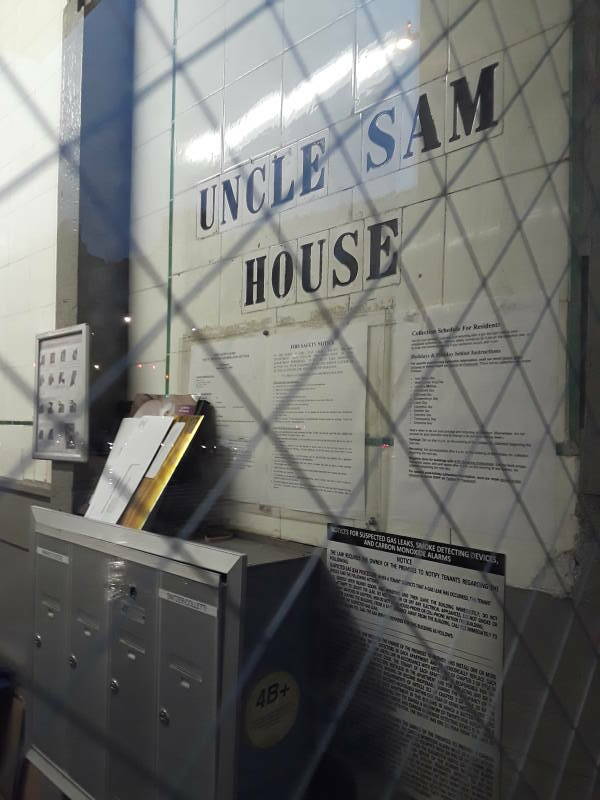
It's here at the corner of Bowery and Houston, with the entry under the vertical "CHAIR TABLE" sign.
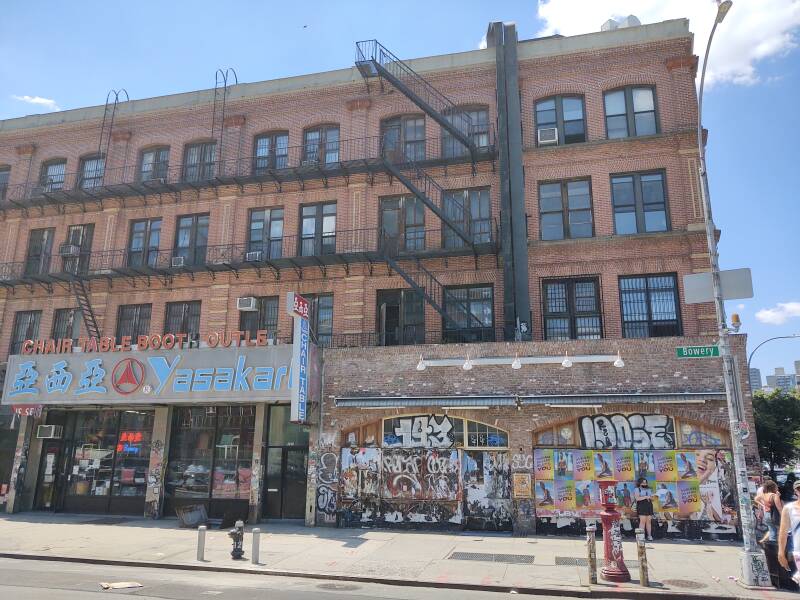
Bowery SROs Converted to Budget Hotels
Further south on Bowery are the New World Hotel at 101 Bowery and the Bowery Grand Hotel at 143 Bowery.
These are converted from SROs into budget hotels. The Bowery House is proud of its background and makes it clear that isn't what most American tourists think of as a hotel. These places, which appear in on-line listings alongside national chains, may surprise the unwary American traveler who thinks they found a good deal on a typical tourist hotel.
One of the staff at the Bowery House told me that they have had a few guests who started their stay in New York at one of these two, and found that a move to the Bowery House was a significant upgrade.
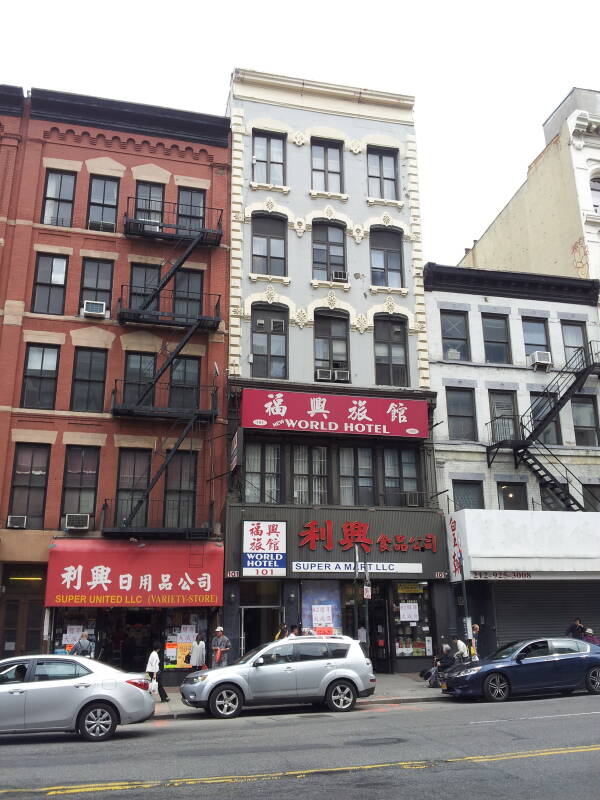

The Bowery Lodge, a little further south at #81 Bowery, seems to have remained an SRO a little longer than the New World Hotel and the Bowery Grand Hotel. But by late 2016 it was also converted into a low-cost hotel.
The entrance is under the white awning, the hotel is upstairs above an AT&T store and the Noho Pharmacy.
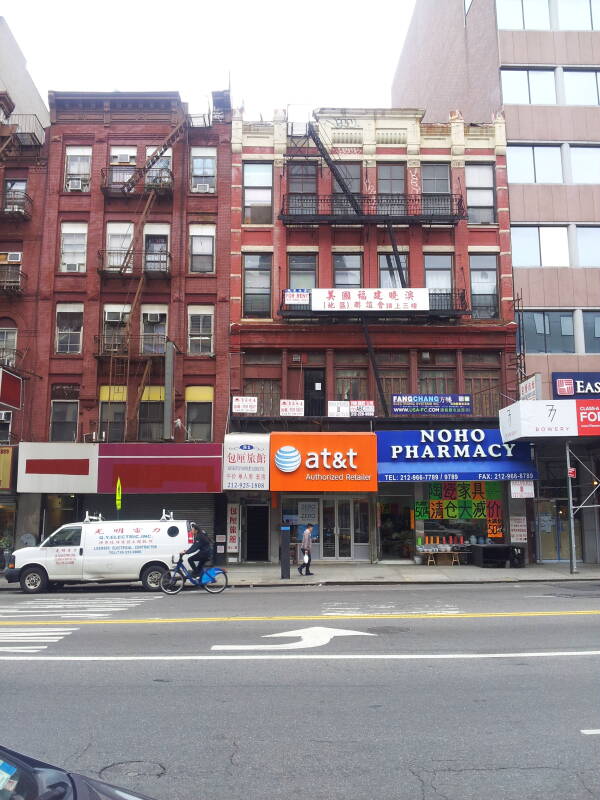
Other Former SROs in New York
There are some prominent former residential hotels for women in Manhattan. One is now converted to condominiums, another is a hostel where you could stay for a few nights. A third has been repurposed into transitional housing to get people off the streets and into permanent homes.
Barbizon Hotel for Women
The Barbizon Hotel for Women was built in 1927 at 140 East 63rd Street, where it crosses Lexington Avenue. It's a 23-story structure with a steel frame supporting concrete walls, covered in brick with limestone and terra cotta decoration.
It was a residential hotel for women intended to provide a "safe refuge" for its occupants. It had very small private rooms with shared facilities, at least conceptually like the men's SROs. Dress and conduct codes were strictly enforced, and men were not allowed above the first floor. It had a swimming pool, Turkish baths, a sun deck, squash and badmiton courts, a solarium and roof garden, a beauty parlor, and a coffee shop.
Residents included Lauren Bacall, Joan Crawford, Grace Kelly, Candice Bergen, Ali MacGraw, Cybill Shepherd, and Jaclyn Smith. Sylvia Plath lived there, and the building featured prominently in The Bell Jar.
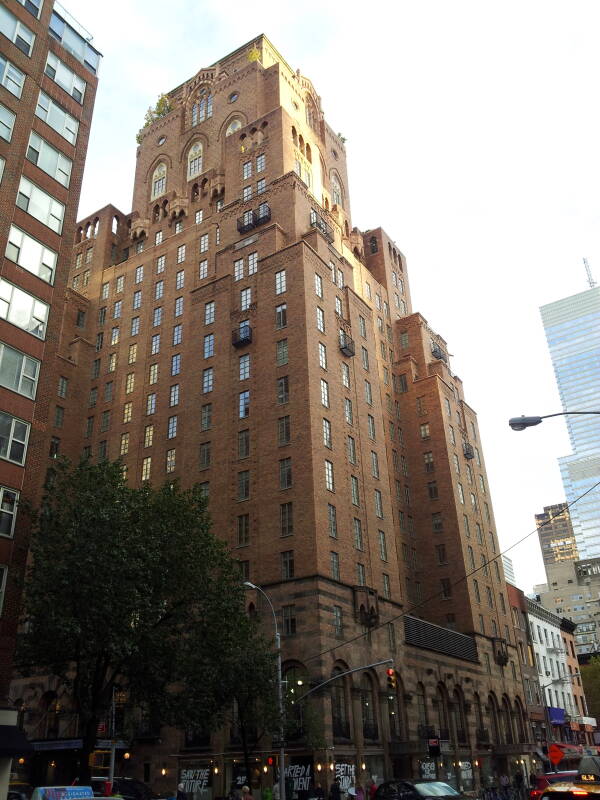
Barbizon Hotel, southeast corner of Lexington and 63rd.
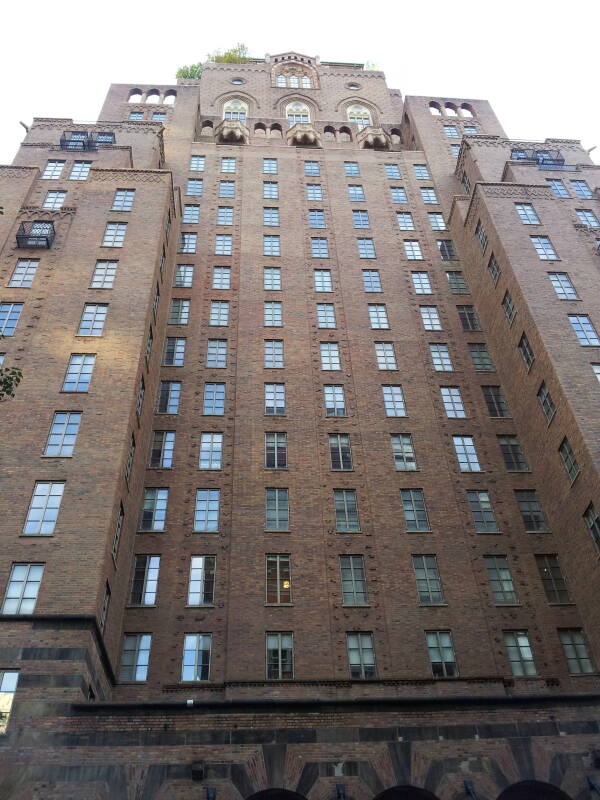
Barbizon Hotel, north façade.
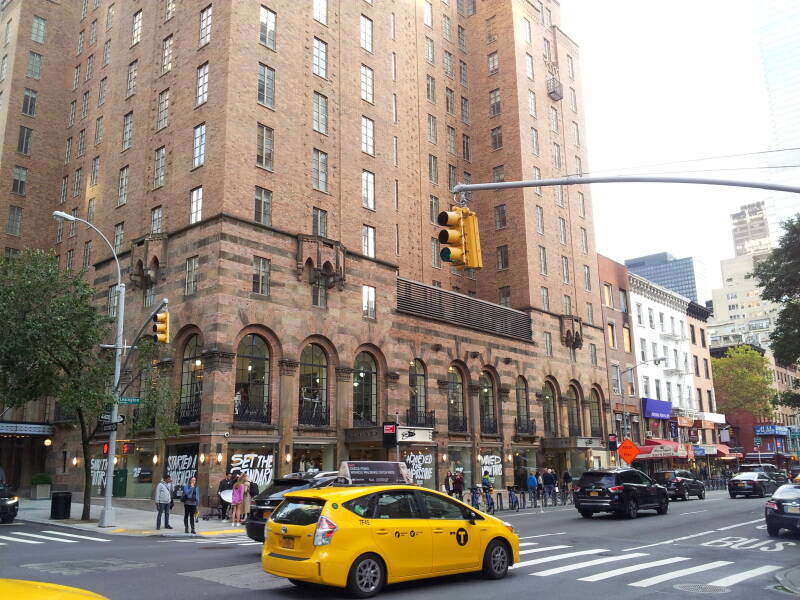
Barbizon Hotel, Lexington Avenue side.
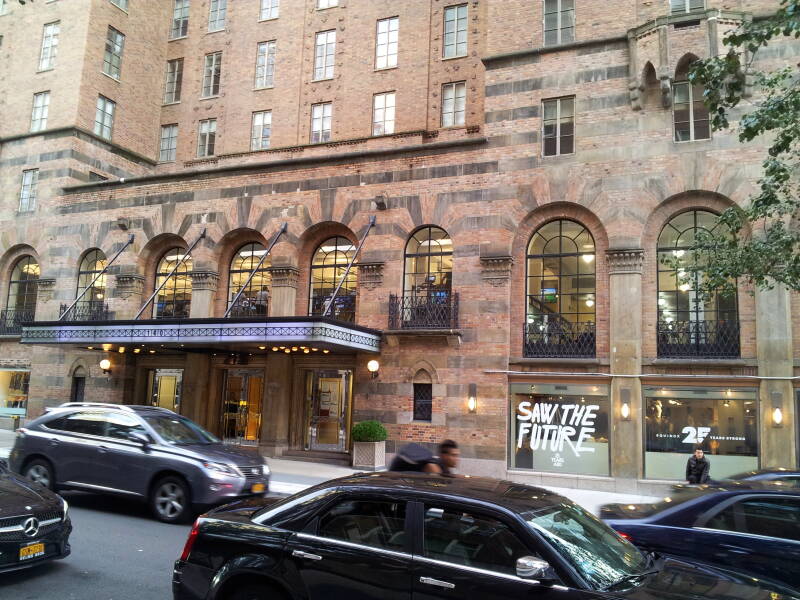
Barbizon Hotel, 63rd Street entrance.
Association Residence for the Relief of Respectable Aged Indigent Females
The Association for the Relief of Respectable Aged Indigent Females was founded in 1813. For its first 25 years it collected and distributed funds to women they felt were worthy of receiving the support. In the 1830s they decided that they needed "an asylum to house some of the pensioners". Their first asylum opened in 1838 on East 20th Street between First Avenue and Second Avenue. In the 1880s they bought property between 103rd Street and 104th Street on Tenth Avenue (now called Amsterdam Avenue), and opened a new building in December 1883. It had enough space for almost every resident to have her own room with a fireplace, plus a dining room and kitchen large enough for 100 residents.
The neighborhood also included a Home for the Destitute Blind in the next block north, across 104th Street, and the Bloomingdale Insane Asylum which was later absorbed into Columbia University's campus.
The Association Residence for the Relief of Respectable Aged Indigent Females kept operating, with extensive renovations in the 1960s that added a new elevator plus shared bathrooms for every two rooms. But by the end of the 1960s the federal government funding through Medicare and Medicaid required meeting further operating and safety inspections which the Residence could not pass.
The Association wanted to tear town the building and replace it. However, it was placed on the National Register of Historic Places. In order to use federal funds to tear down a listed building, the only way they could afford to do so, they had to create an environmental impact statement.
HostellingInternational
New York City
The remaining women were moved out in 1974. Scavengers began stripping out the copper pipes and wiring, and the city wanted to tear it down as it was a "fire, health, and moral hazard". The windows and doors on the bottom two floors were sealed in metal sheeting.
The American Youth Hostels organization began looking for a site in New York in the late 1970s, and found the building. Reconstruction began in 1987. It opened as a hostel in January 1990, with 480 beds. Now it has 670 beds, the largest in North America.
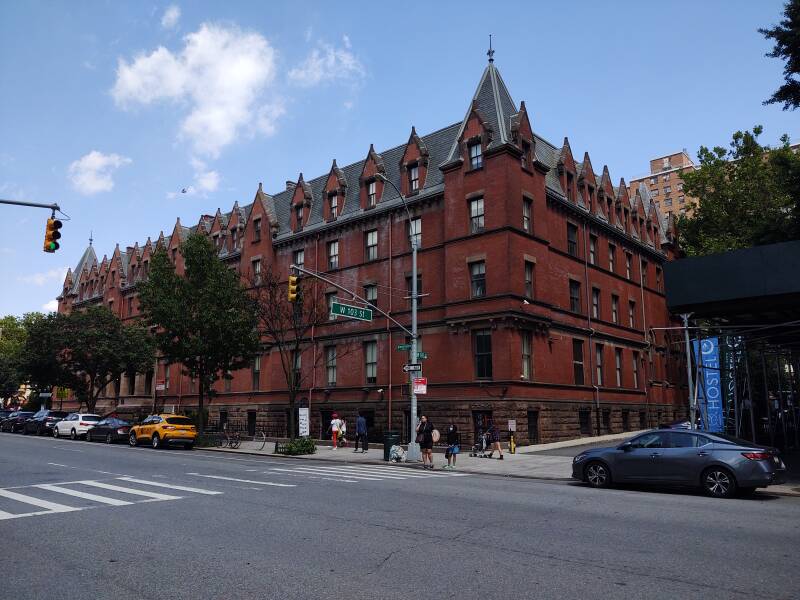
Hotel Barbour
The Hotel Barbour is in Midtown Manhattan. It's at 330 West 36th Street near Ninth Avenue. It operated as an SRO until at least around 2010.
By 2017 it was operating as transitional housing. It was where homeless people could stay while transitioning to permanent housing.
James Harris Jackson was a white Baltimore man whose hated black men. Made bolder by the increased tolerance of white supremacy under the Trump administration, he traveled to New York to hunt and kill black men around Times Square. The man he happened to select and kill with a miniature sword, Timothy Caughman, was a benevolent man on the staff at Hotel Barbour. It was described as his longtime home, so I assume that he had lived there for several years when it was an SRO. Timothy was the son of a pastor and a home health care aide, and he had worked in antipoverty programs in Queens. At the Barbour he worked with the recently homeless families and individuals.
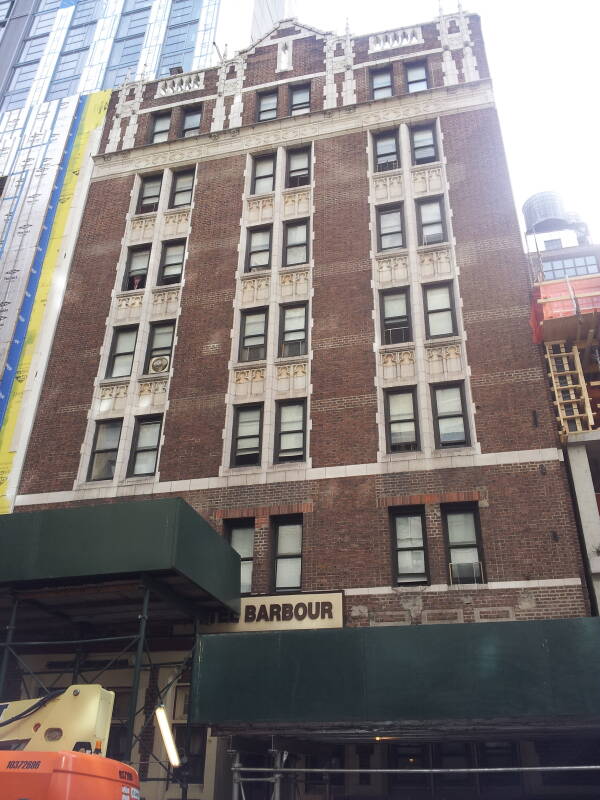
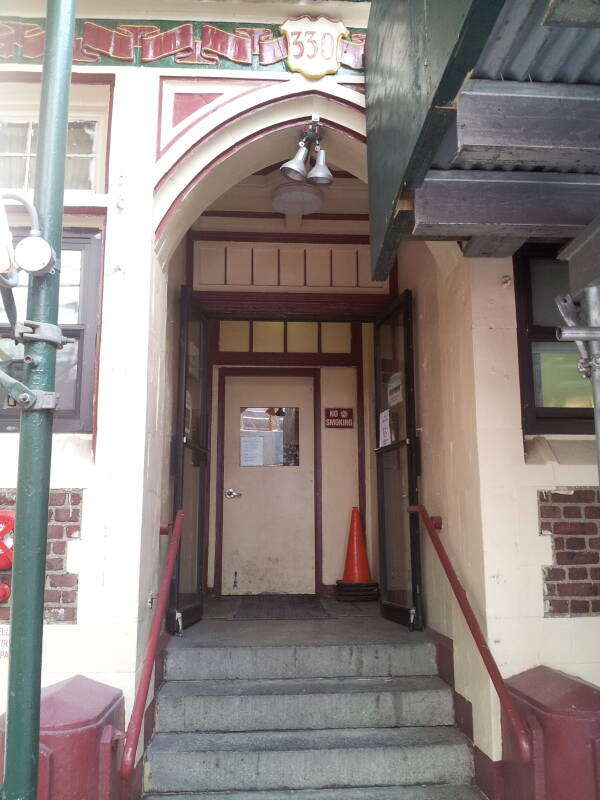
USA Travel Destinations
Back to International Travel